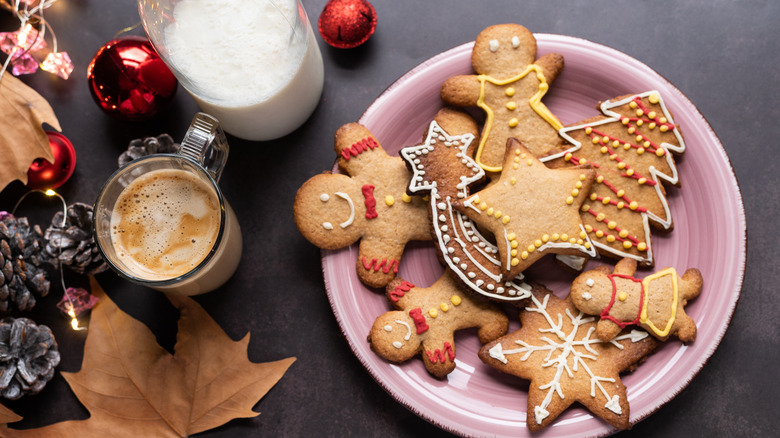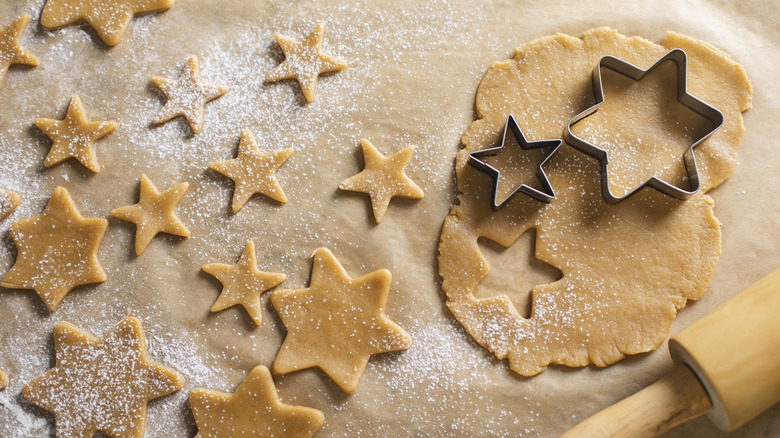The World's Earliest Gingerbread Recipes Featured An Ingredient You Might Not Expect
We may receive a commission on purchases made from links.
Whether you've baked miniature men with your grandmother's handed-down recipe every year, piped icing on a rickety house hastily assembled in your kitchen, or simply gazed at a meticulously detailed candy mansion in a hotel lobby, your winter holiday celebrations have likely involved gingerbread at some point. Gingerbread's heady blend of spices and sweet molasses is a jolt of joy during the year's darkest days, so it's no wonder that societies have been preparing it in some form or another for hundreds of years. In fact, documented recipes dating to the early 15th century call for a component that most modern cooks wouldn't anticipate: breadcrumbs.
These days, gingerbread can take on many forms: Sturdy houses for building; soft, chewy cookies for eating; cakes, some topped with frosting for dessert; others flat, drizzled with syrup and served at breakfast. The list goes on and on. But few would associate the confection with standard bread. According to John Ayto's "An A-Z of Food & Drink," the name "gingerbread" was derived from the Old French term "gingebras." This translates to "preserved ginger" and originates from "zingebar," which is ginger's Latin name.
The evolution took place during the 14th and 15th centuries; a period when the conventional way to make gingerbread involved creating a paste out of boiled breadcrumbs, honey, ginger, and a riot of other spices, which could have included clove, nutmeg, and mace. Some recipes even had booze. The pulp was then rolled out and dried.
From medicine to molds to molasses
Across much of Europe, particularly England, gingerbread was kind of like the "spoonful of sugar" to accompany medicine — only in this case, the ginger component itself was the remedy, providing gastrointestinal relief. During the Middle Ages, monks began molding the mixture into religious images and distributing them as a way to physically and spiritually feed the hungry. That practice is believed to have inspired the tradition of fashioning gingerbread into other shapes —most of them whimsical and celebratory. The first gingerbread "men" may have been the doing of Queen Elizabeth I, who instructed her kitchen staff to shape ginger biscuits into the likeness of her most important guests.
By the mid-17th century, tastes began to shift and so did what the masses considered "gingerbread." At that time, heavily spiced foods were falling out of favor and sweeter treats such as custards and cakes grew in popularity. Among those was the lighter spiced honey cake, eventually dubbed "gingerbread," which in America was made with less-expensive molasses.
It's a complex journey for such a seemingly simple treat — one where today no boiling or rolling of breadcrumbs is required. In fact, there's probably a Starbucks gingerbread latte within a 10-minute drive from wherever you're reading this.

